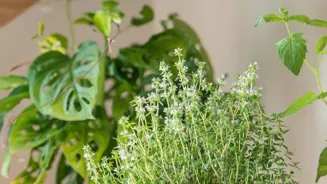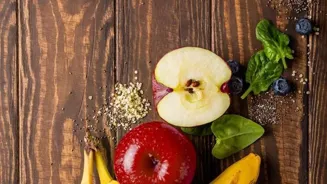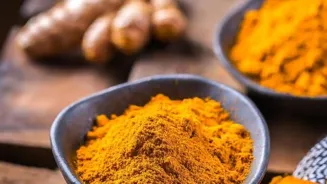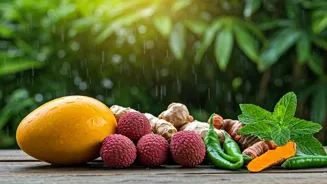Discover the power of Ayurveda in your kitchen garden! Grow 7 essential herbs for good health. Read on to learn more
Introduction: Namaste readers! In India, we know the power of Ayurveda and natural remedies.
For centuries, our grandmothers and mothers have used herbs not just in cooking, but also for treating common ailments.
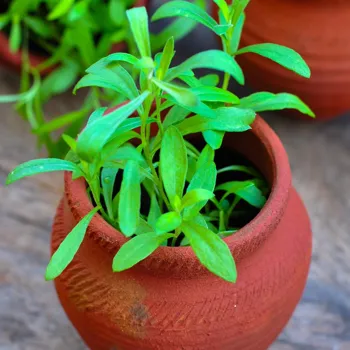
Imagine having that power right at your fingertips, growing your own medicine cabinet in your very own home! You don't need a huge garden; even a small balcony or window box will do. Growing your own herbs is easy, rewarding, and incredibly beneficial for your health.
Plus, fresh herbs add a burst of flavour to your daily meals. Let's explore seven essential herbs you can easily cultivate at home and the amazing health benefits they offer. Get ready to get your hands dirty and embrace the goodness of nature!
So, ditch the expensive store-bought versions, and let’s get started on building your very own medicinal garden. What could be better than fresh, organic, and easily accessible ingredients for a healthy and happy you? Let's delve into the wonders of these seven powerful herbs!
Tulsi (Holy Basil): The Queen of Herbs
Tulsi, also known as Holy Basil, is revered in India for its spiritual and medicinal properties. It’s considered an adaptogen, which means it helps your body cope with stress. Tulsi is packed with antioxidants and has anti-inflammatory properties.
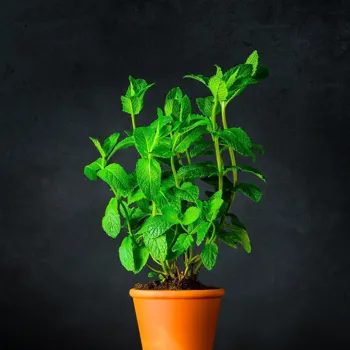
You can easily grow tulsi from seeds or cuttings in a pot with well-draining soil. Keep it in a sunny spot and water regularly. For health benefits, you can chew a few leaves daily, brew tulsi tea, or add it to your kadha (herbal concoction).
It is known to boost immunity, relieve cough and cold symptoms, and even help with digestion. Beyond its health benefits, tulsi also purifies the air around it, making it a perfect addition to your home.
Having a tulsi plant at home is like having a mini pharmacy and an air purifier rolled into one. The aroma itself is calming and refreshing. Regularly consuming tulsi can lead to a noticeable improvement in your overall well-being. Make sure to water and prune the plant appropriately.
Pudina (Mint): Refreshing and Digestive
Pudina, or mint, is a versatile herb with a refreshing aroma and a multitude of health benefits. It is known for its cooling properties and is often used to soothe digestive issues.
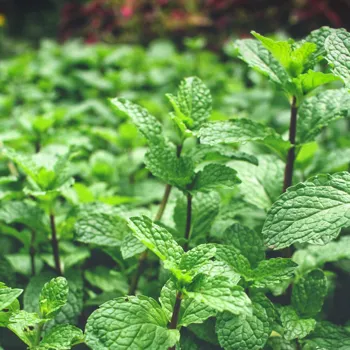
Mint is incredibly easy to grow; simply place a cutting in a glass of water until roots develop, then plant it in a pot or directly in your garden. Mint prefers moist soil and partial shade. You can use pudina in chutneys, raitas, teas, or as a garnish.
It helps with indigestion, bloating, and nausea. Chewing a few mint leaves after a meal can freshen your breath and aid digestion. Mint is also known to relieve headaches and clear congestion. The strong scent of mint can also act as a natural insect repellent.
Just be mindful that mint can spread quickly, so it’s best to grow it in a container to keep it under control. It is like a burst of freshness you can add to your plate.
Adrak (Ginger): The Warming Spice
Adrak, or ginger, is a staple in Indian cooking and medicine. It has powerful anti-inflammatory and antioxidant properties. Ginger is known for its ability to relieve nausea, reduce muscle pain, and improve digestion.
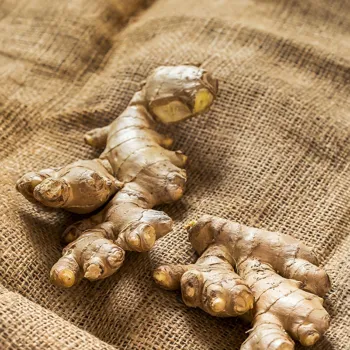
To grow ginger, simply plant a piece of ginger root with sprouting buds in a pot or garden bed. Ginger prefers warm, humid conditions and well-draining soil. Keep the soil moist, but not waterlogged. You can use ginger in tea, curries, soups, or even chew on a small piece to alleviate nausea.
Ginger tea is a popular remedy for colds and flu. Consuming ginger regularly can lead to improved circulation. It also improves digestion as a whole. Ginger is a must-have in your kitchen and garden. Don't overwater it or else the roots will rot.
Haldi (Turmeric): The Golden Healer
Haldi, or turmeric, is a powerful antioxidant and anti-inflammatory agent. It contains curcumin, a compound known for its numerous health benefits. Turmeric is relatively easy to grow, but it requires a longer growing season.

Plant turmeric rhizomes (underground stems) in pots or garden beds in early spring. Turmeric prefers warm, humid conditions and well-draining soil. Water regularly and harvest the rhizomes in the late fall. You can use turmeric in curries, soups, milk (haldi doodh), or even make a face mask.
Turmeric is known to boost immunity, improve skin health, and even lower the risk of chronic diseases. Adding turmeric to your daily diet can have a profound impact on your overall well-being. Remember to always use turmeric with black pepper to enhance curcumin absorption.
Dhaniya (Coriander/Cilantro): The Fresh Flavour Booster
Dhaniya, or coriander (cilantro), is a widely used herb in Indian cuisine. It adds a fresh, citrusy flavour to dishes and is packed with vitamins and minerals. Coriander is easy to grow from seeds. Soak the seeds overnight before planting them in a pot or garden bed.
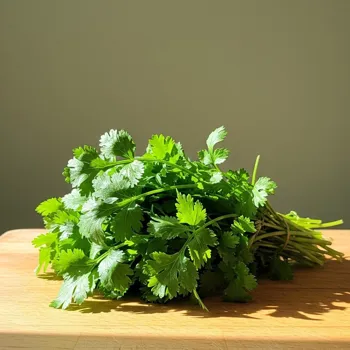
Coriander prefers cool weather and well-draining soil. You can harvest the leaves as needed. Coriander helps to aid digestion and it also has a cooling effect to the body. The seeds themselves, also known as coriander or dhania, provide a range of benefits as well.
You can use coriander leaves as a garnish, in chutneys, or in curries. Consuming coriander regularly can help improve digestion and lower blood sugar levels. The distinctive flavor of coriander elevates any dish it's added to. It is a refreshing and healthy addition to any meal.
Methi (Fenugreek): The Versatile Herb
Methi, or fenugreek, is a versatile herb with both leaves and seeds offering a range of health benefits. It is known to help control blood sugar levels, improve digestion, and even boost milk production in lactating mothers. Methi is easy to grow from seeds.
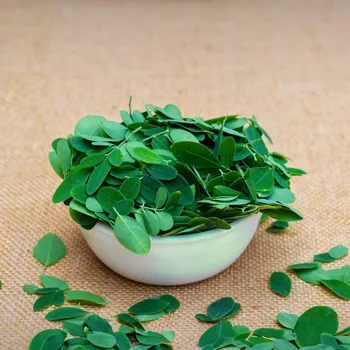
Soak the seeds overnight before planting them in a pot or garden bed. Methi prefers well-draining soil and plenty of sunlight. You can harvest the leaves as needed or allow the plants to mature and harvest the seeds. You can use methi leaves in curries, sabzis, or as a vegetable.
You can also sprout the seeds and add them to salads. Methi seeds can be used as a spice in cooking or soaked in water and consumed for their health benefits. Consuming methi regularly helps to improve metabolism.
The leaves add a slightly bitter yet flavourful element to culinary preparations, while the seeds can be used in Ayurvedic remedies.
Curry Patta (Curry Leaves): The Aromatic Enhancer
Curry patta, or curry leaves, are an essential ingredient in South Indian cuisine. They add a unique aroma and flavour to dishes and are packed with antioxidants. Curry leaves helps promote hair growth. You can grow curry leaves from seeds or cuttings.

Curry leaves prefer warm weather and well-draining soil. Water regularly and fertilize occasionally. The leaves are added to curries, stir-fries, and rice dishes. Consuming curry leaves helps lower cholesterol and protects the liver.
Chewing a few curry leaves everyday helps to strengthen your hair. The distinct aroma of curry leaves elevates any dish. In conclusion, bringing nature close to you, you bring about good health to you and your family.
Conclusion:
Growing your own herbs is a simple yet profound way to take control of your health and well-being. These seven essential herbs are just a starting point. Explore the world of herbal remedies and discover the healing power of nature right in your own backyard.
So, start planting and enjoy the numerous benefits these amazing herbs have to offer! Happy gardening, and stay healthy!
AI Generated Content. Glance/InMobi shall have no liability for the content